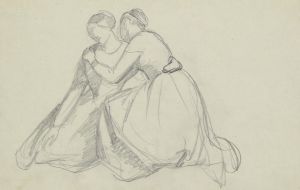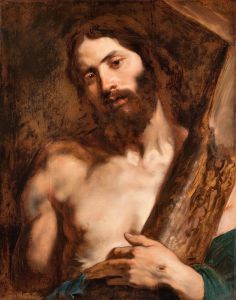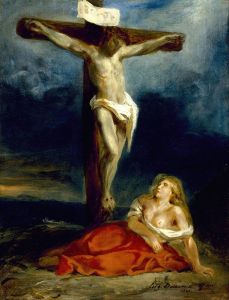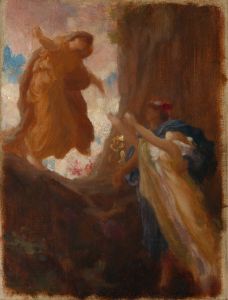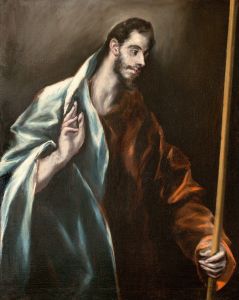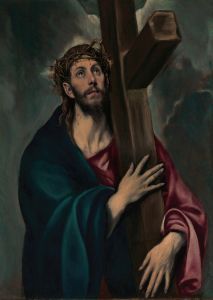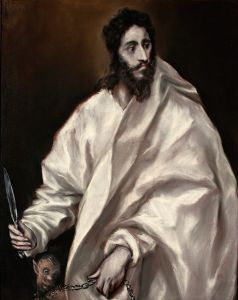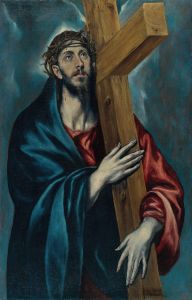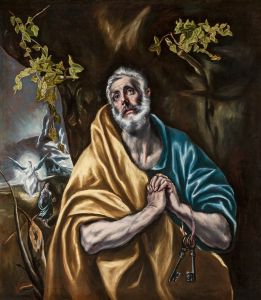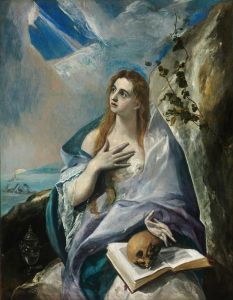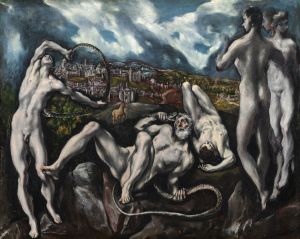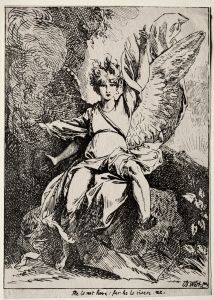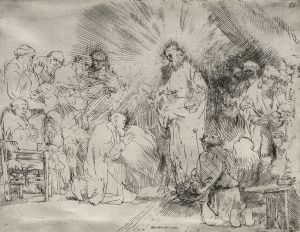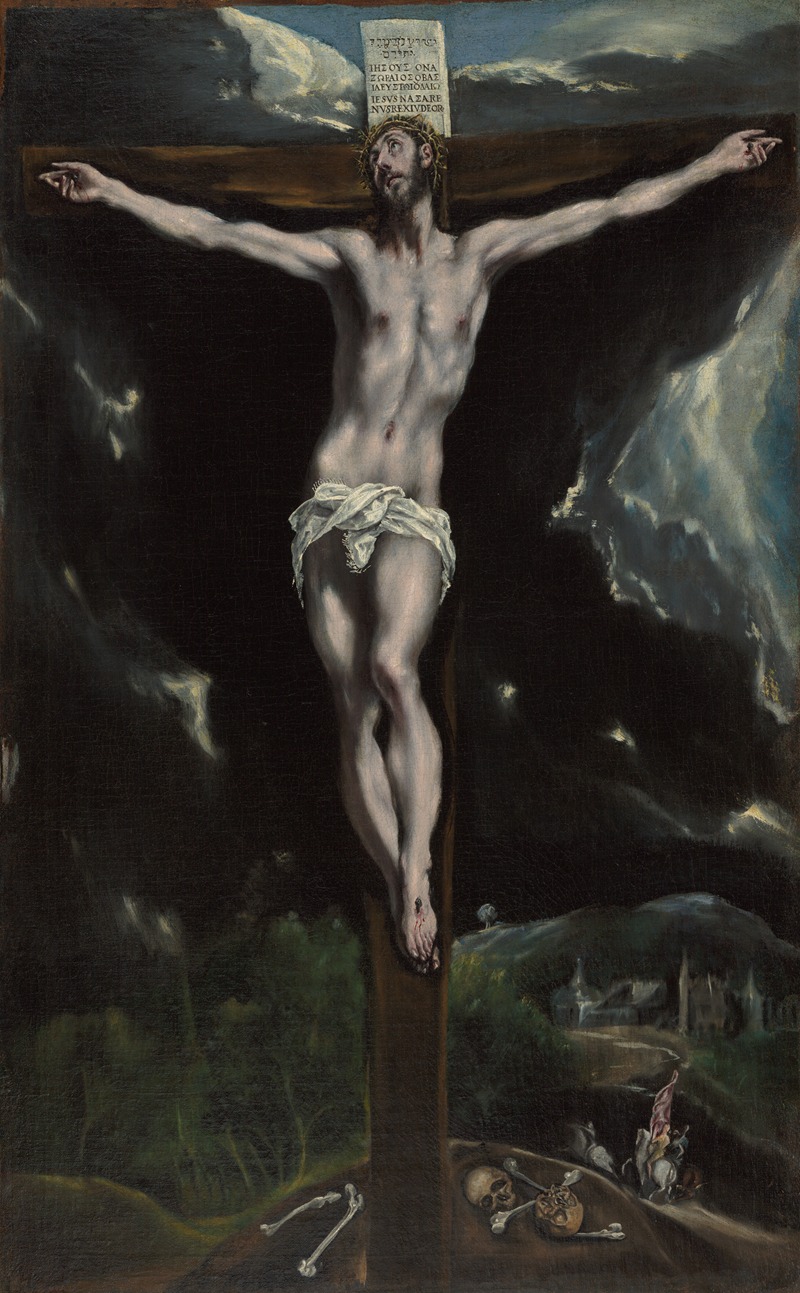
Christ on the Cross
A hand-painted replica of El Greco (Domenikos Theotokopoulos)’s masterpiece Christ on the Cross, meticulously crafted by professional artists to capture the true essence of the original. Each piece is created with museum-quality canvas and rare mineral pigments, carefully painted by experienced artists with delicate brushstrokes and rich, layered colors to perfectly recreate the texture of the original artwork. Unlike machine-printed reproductions, this hand-painted version brings the painting to life, infused with the artist’s emotions and skill in every stroke. Whether for personal collection or home decoration, it instantly elevates the artistic atmosphere of any space.
"Christ on the Cross" is a painting by the renowned artist El Greco, whose real name was Domenikos Theotokopoulos. El Greco was a painter, sculptor, and architect of the Spanish Renaissance, originally from Crete, which was then part of the Republic of Venice. He is known for his distinctive style, characterized by elongated figures, dramatic use of color, and emotional intensity.
This particular work, "Christ on the Cross," depicts Jesus Christ crucified, a subject that El Greco explored multiple times throughout his career. The painting is notable for its spiritual intensity and the artist's unique approach to religious themes. El Greco's interpretation of the crucifixion often emphasizes the divine nature of Christ, focusing on his serenity and transcendence rather than physical suffering.
In this composition, Christ is shown nailed to the cross, with his head slightly tilted downward and his eyes closed, suggesting a moment of solemn reflection or the final moments of his life. The background is typically dark and dramatic, a hallmark of El Greco's style, which enhances the spiritual atmosphere of the scene. The figure of Christ is elongated, a characteristic feature of El Greco's work, which some art historians interpret as a way to convey a sense of otherworldliness and divine grace.
El Greco's use of color in this painting is also significant. The contrast between the pale, luminous body of Christ and the darker, more subdued tones of the background creates a striking visual effect, drawing the viewer's attention to the central figure. This use of light and shadow is a technique that El Greco mastered, contributing to the emotional impact of his religious works.
The exact date of this painting is not definitively known, as El Greco created several versions of the crucifixion theme during his career. However, it is generally attributed to his mature period, when he was living and working in Toledo, Spain. During this time, El Greco developed the highly individualistic style that has made him one of the most celebrated artists of the late Renaissance.
"Christ on the Cross" is housed in various collections, as El Greco's crucifixion scenes exist in multiple versions. Each version reflects the artist's evolving style and his deep engagement with religious themes. The painting exemplifies El Greco's ability to combine Byzantine traditions, which he inherited from his early training in Crete, with the influences of the Italian Renaissance and the spiritual fervor of Counter-Reformation Spain.
This work remains a powerful example of El Greco's artistry and his ability to convey profound religious emotion through his innovative approach to composition, color, and form.





